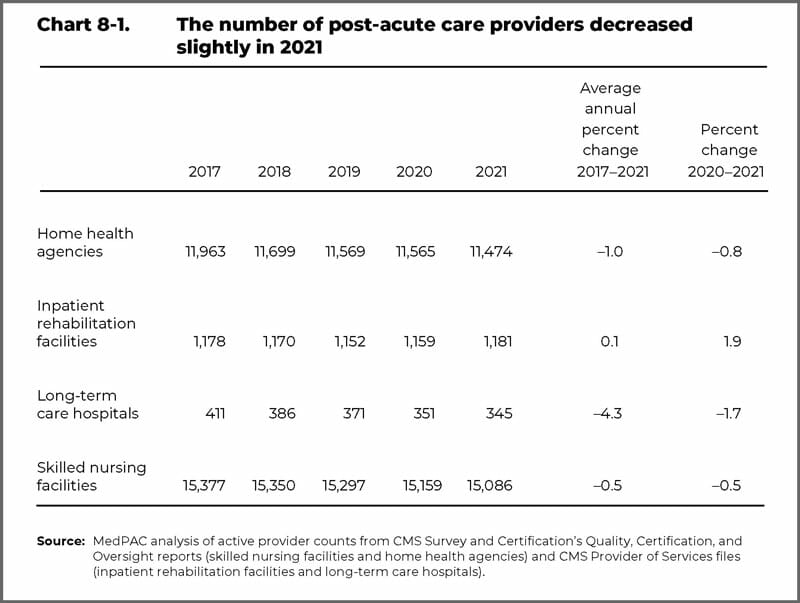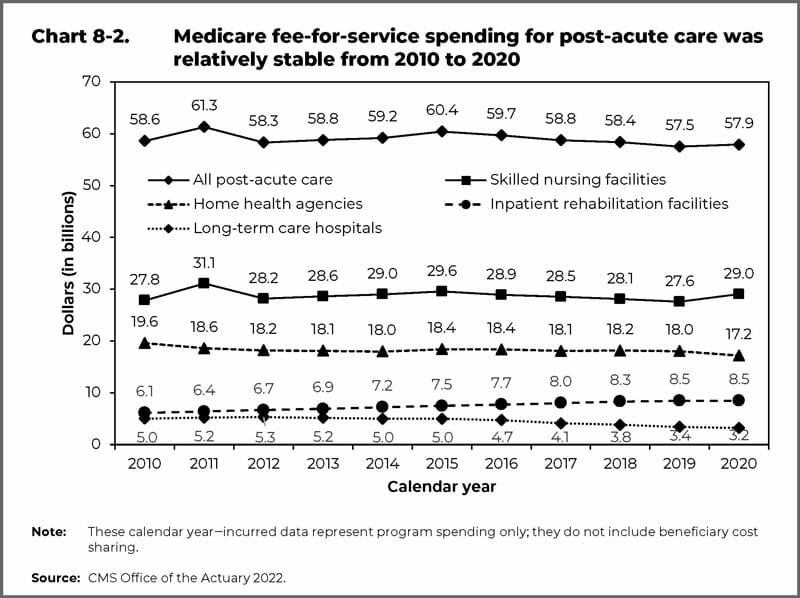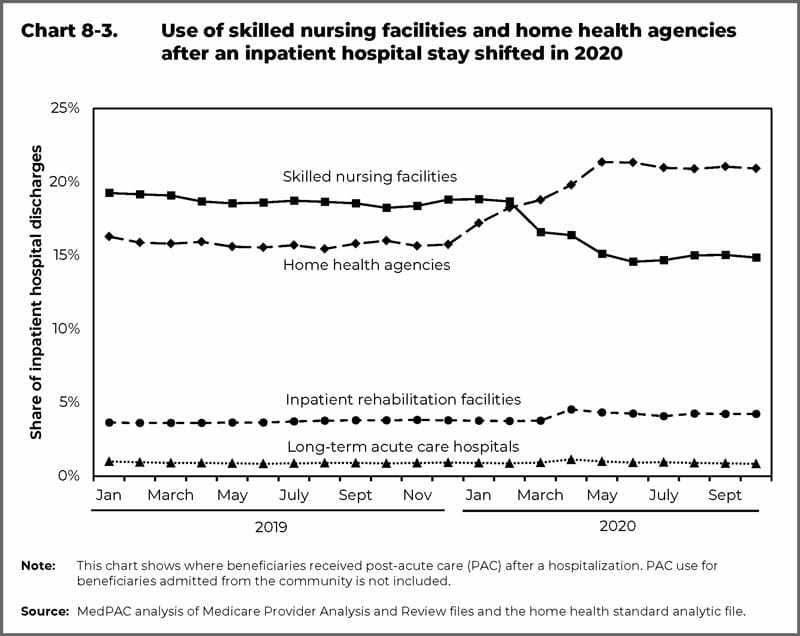
The number of home health agencies in the United States slipped by 0.8%, to 11,474, from 2020 to 2021. This reflects a continuing decline since 2013, the Medicare Payment Advisory Commission (MedPAC) said in a new report.
Texas and Florida experienced the largest decrease in agencies over the years, said MedPAC, which advises Congress on Medicare. These two states saw considerable growth after the implementation of the home health prospective payment system in October 2000.

Pandemic impact
The report also uncovered some home health trends affected by the pandemic. For example, the number of home health users dropped by 7.3% from 2019 to 2020, which was greater than previous years. The same was true for total spending, which decreased by 4.7% from 2019 to 2020, to approximately $17 billion.
Also, starting in March 2020, the beginning of the pandemic, the share of inpatient hospital discharges referred to skilled nursing facilities declined, and the share receiving home health services increased. (See chart 8.3.)
And the pandemic likely had an impact on the rate of “successful discharge to the community” from home health. The successful discharge rate in 2020 was 60.9%, substantially lower than the preceding five years, the report said. Beneficiaries with “successful discharge to the community” included those who did not have an unplanned hospitalization or die in the 30 days after discharge, according to the report.

Second most-used PAC service
In 2020, home health was the second most-frequent type of post-acute care (PAC), used after 15.8% of inpatient discharges. That trailed skilled nursing facilities, which were the most common type of PAC and used after 18.7% of inpatient discharges. Freestanding agencies, which make up 87% of all home health agencies, had an aggregate margin of 20.2% in 2020. Mostly-urban agencies had a margin that year of 20%, and for-profits, which comprise 87% of all agencies, had a margin of 22.7%.
And the report revealed that the majority of home health periods are not preceded by a hospitalization or institutional PAC stay. Community-admitted cases, in fact, accounted for around three-quarters of home health stays in both 2019 and 2020.



